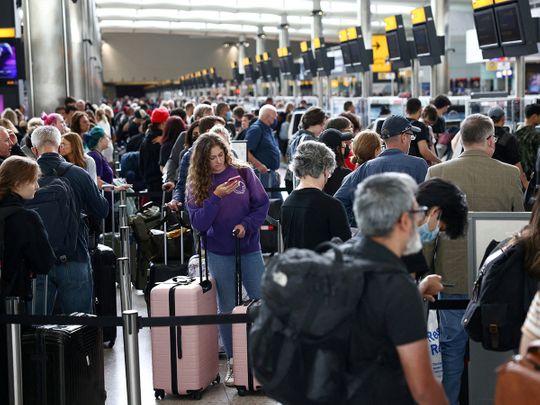After the Covid-19 slump, the tourism industry across Europe recovered in 2023 and 2024, drawing close pre-pandemic levels and even surpassing them in some countries, according to the data released by the European Commission (EC).
A report quoting the EC data, said that there were 452.6 million overnight stays in tourist accommodations across the European Union in the first quarter of 2024, marking a 7 percent increase compared with the same quarter of 2023.
Foreign visitors accounted for approximately 45 percent of all overnight stays in the first three months of 2024, but there were large differences among EU countries. The biggest share of foreign visitors staying was recorded in Malta (91 percent), Cyprus (87 percent), Luxembourg (82 percent) and Austria (78 percent).
At the other end of the ranking are Germany, Romania and Poland – all geographically large countries – with a share of foreign overnight stays of around 20 percent.
Bright side
Derided as “Club Med” nations during the European debt crisis 15 years ago, the economies of Spain, Greece and Portugal are now outperforming their northern peers thanks to a rebound in tourism.
Slovenian tourism also posted record results last year, despite devastating floods in early August. The country, which has about 2.1 million inhabitants, welcomed 6.2 million tourists, up 5.5 percent compared to 2022 and only 0.6 percent less than in 2019, before the pandemic.
In North Macedonia, the number of tourists during January – April 2024 rose by 15.3 percent compared to the same time last year, and the number of overnight stays increased by 15.2 percent. A majority of visitors came from Turkey, Germany, Serbia, Greece, Bulgaria, Croatia and Slovenia.
Neighbouring Albania was visited by 10.1 million tourists last year, an increase of 35 percent compared to 2022. The upward trend continued in the first months of 2024, when about 974,000 foreign tourists visited Albania during May alone, bringing the total number of incoming tourists to more than 3.3 million in the first five months of the year.
Cities grapple with overcrowding
Rising tourism may be good for the economy, but overcrowding is causing growing resentment among the residents of popular hotspots across the continent.
Websites such as Airbnb add to the problem with illegal rentals and pressure on the housing market, according to members of the European Parliament.
In Italian destinations such as Venice, Rome and parts of Tuscany, residents are calling for the flow of visitors to be controlled. Venice recently introduced an entrance fee for day trips.
In Palma on the Spanish island of Mallorca, city mayor Jaime Martínez has presented plans to control mass tourism in the city centre. The most sweeping proposal is a ban on creating any more rental space for tourists, local media reported. He also suggests introducing regulations to curb the rental of properties to foreigners.
In the Netherlands, Amsterdam also saw a rise of visitors in 2023 compared to the previous year, with some 60 percent coming from within the Netherlands, the rest from abroad. The city expects the number of tourists to continue to rise.
“The flow of visitors puts pressure on facilities and, in particular, the city centre is often too crowded,” says a statement issued by the municipality.
In March, EU ministers gave their final approval to a regulation requiring platforms to share data on landlords with municipalities, among others. This will allow local officials to take stricter action if landlords do not comply with the rules.

